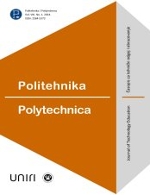Utjecaj korištenja programskog jezika Logo na razumijevanje osnovnih pojmova o mnogokutima
The impact of using Logo programming language on understanding basic concepts of polygons
Author(s): Kristina Juričić, Žana Žanko, Monika MladenovićSubject(s): School education, Sociology of Education
Published by: Akademsko politehničko društvo APOLD Rijeka
Keywords: programming language Logo; turtle graphics; polygons; quasi-experiment;
Summary/Abstract: The Logo programming language is one of the first programming languages designed for children, originating in 1966 primarily for teaching geometry. The logo is based on the concept of turtle graphics, which remains prevalent today in developing computational thinking and for initial programming education. It is clear that at the time of Logo's inception, the idea of personal computers was still in the realm of science fiction, as was computer science as an independent discipline. However, Seymour Papert's visionary outlook laid the foundation for computational thinking and programming education from an early age, which is ubiquitous today. As Papert was primarily a mathematician with a focus on mathematics education, Logo was developed specifically for teaching geometry and facilitating children's understanding of basic geometric concepts such as polygons. Nevertheless, there is limited research on the impact of Logo on the understanding of basic geometric concepts. This study aims to investigate the influence of using the Logo programming language in teaching geometry to eighth graders, with a focus on fundamental polygon concepts, identify common errors in learning polygons, and assess the effectiveness of the Logo program in promoting interactive geometry learning. This research utilized both qualitative and quantitative methods to provide a comprehensive insight into this topic. The study showed that the implementation of turtle graphics in the Logo programming language for teaching basic polygon concepts results in a better understanding of polygon concepts among students and encourages interactive geometry learning.
Journal: Politehnika: Časopis za tehnički odgoj I obrazovanje
- Issue Year: 8/2024
- Issue No: 1
- Page Range: 32-41
- Page Count: 10
- Language: Croatian

